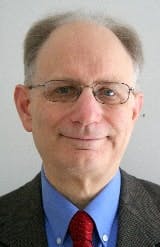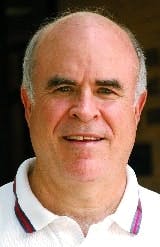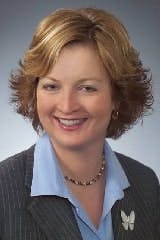2007 Process Automation Hall of Fame
People come to the discipline and practice of process automation in many different ways and come down some pretty twisty paths. How did growing up on a potato farm outside Waupaca, Wis., prepare Jim Christensen for becoming one of Allen-Bradley’s and then Rockwell Automation’s senior engineering theorists, for example? These are truly fascinating people for what they have already achieved, as well as what they still will in their ongoing careers.
Getting Elected to the Process Automation Hall of Fame
You cannot apply to the Hall. Each year, the editors of Control and the previous inductees to the Hall of Fame produce a nomination slate listing as many as ten highly respected engineers or process automation professionals. Then the previously inducted members of the Hall of Fame are asked to vote for three from that list. The top three vote getters are inducted by their peers into the Process Automation Hall of Fame.
James H. Christensen
Potatoes to PLCs, and only semi-retired.
From that potato farm in Wisconsin, Jim Christensen went on to the University of Wisconsin, earning a doctorate in Chemical Engineering/Computer Science in 1967, during which time he participated in a foreign exchange program with the Instituto Tecnologico y de Estudios Superiores in Monterrey, Mexico. He went on to postgraduate work at Dartmouth College, where he showed early promise by becoming a Ford Foundation Fellow in Engineering Design.
His early career alternated between academia and practical work. After leaving Dartmouth, he joined Chemshare Corp., where he developed automated calculation-sequencing and convergence-forcing modules for large chemical plant design and simulation programs. Later, for what was then the U. S. Atomic Energy Commission, in a two month period he designed, debugged and documented data acquisition hardware and software interface between a PDP-8L minicomputer and a large EAI hybrid computer.
Throughout the 1970s, Christensen alternated between operating as a real-world consultant and an academician, except for a sojurn in the late 1970s into running a company that made and marketed electronic musical instruments. Following that, he became senior systems engineer for TI’s PM550 and 510 programmable controllers.
In 1982, he was hired as manager of advanced research and development for Allen-Bradley, later Rockwell Automation. During his 23-year career there, he led the development of the IEC 61131-3 Standard for Programming Languages for Programmable Controllers, the global standard for this segment of the automation and control market. He has also led the development of the IEC 61499 standard, the successor to IEC 61131-3, for the next generation of industrial automation and control. His Function Block Development Kit software is the first internationally used IEC 61499-compliant software tool kit.
In addition to his work with the IEC, he has been in leading positions in the international Intelligent Manufacturing Systems (IMS) Program since its inception in 1990. He has served in both technical and management positions in the Holonic Manufacturing Systems (HMS) consortium, comprising major industrial and academic partners from Japan, Europe, Canada, Australia and the United States. He is a founding Member of the Board of Directors of the new IMS OOONEIDA Community of Common Interest for Intelligent Distributed Automation.
Jim retired from Rockwell in 2005, mostly so he could devote his entire attention to evangelizing for IEC 61499, which he does from his post as president of Holobloc, Inc.. Christensen says, “The 61499 standard has so far inspired a lot more academic research than industrial adoption—an indication that it is still quite far advanced from the state of the art in industrial practice.”
About those twisty paths, Christensen says, “the last good book I’ve read is The Reluctant Parting: How the New Testament’s Jewish Writers Created a Christian Book by Julie Galambush,” he says. Christensen goes on, “Probably my most interesting project is trying to adapt the Tibetan Buddhist path of spiritual development called the “lam rim” (“steps on the path”) to Christianity.” He concludes, “There is a long spiritual odyssey behind that, but that is another story.”
Along the way, Christensen married. “As of January 27, I’ll have been married to the same fine woman for 44 years. We’re the proud parents of two very accomplished sons and four lovely grandchildren,” Christensen boasts that, “One of the great pleasures of semi-retirement is being able to hop in the car and drive over to see them.”
Thomas F. Edgar
Tom Edgar is grandmaster of control theory.
“My obsession is the energy situation,” says inductee Thomas F. Edgar. “I teach a class at UT on energy policy and technology, have read several books by Tom Friedman recently and I also like The End of Oil by Paul Roberts.” Another twisty path?
Maybe so, but for the past 35 years, Edgar has concentrated his academic work in process modeling, control and optimization. He has published over 200 articles and book chapters in those fields applied to separations, chemical reactors, coal combustion and gasification, and semiconductor manufacturing. He has supervised the thesis research of over 42 M.S. and 60 Ph.D. students. He also co-directs the Texas-Wisconsin Modeling and Control Consortium, which involves 12 companies.
Currently, Edgar is the George T. and Gladys H. Abell Chair in Chemical Engineering at the University of Texas at Austin, where he began teaching in 1971.
“I was a founder of the minority engineering program at UT in the 1970s,” Edgar says, “and we now have the third largest enrollment of minority engineers in public universities.”
Edgar has co-authored the textbooks Coal Processing and Pollution Control Technology (Gulf Publishing, 1983), Optimization of Chemical Processes (McGraw-Hill, 1988 and 2001) and Process Dynamics and Control (Wiley, 1989 and 2004).
Most of his peers, in the comments that accompanied their ballots this year referred to Process Dynamics as “the bible of process control theory.” The book received the 1990 American Society of Engineering Education Meriam-Wiley Award as the top engineering textbook, and it has been used at over 60 universities in the U.S.
He was the lead author for the Process Control section for the last two editions of Perry’s Chemical Engineering Handbook.
Edgar was an early adopter of computing technology, and serves as Executive Officer of the Chemical Engineering Education Corporation, a non-profit corporation dedicated to furtherance of computer-aided undergraduate education in chemical engineering.
A past Director of AIChE, Tom was elected Vice President of AIChE for 1996 and President for 1997. He is Chair of the AIChE Foundation. He also served for two years as Vice-Chair and Chair of the Council for Chemical Research. He was founding general editor of the technical journal, In Situ, and has participated on six editorial boards and five university advisory committees.
Tom hasn’t spent his whole career in academia. He has also been a consultant to several companies, including AMD, Texas Instruments, Emerson Process Management and Chemstations.
Married to retired IBMer Donna, the Edgars have two children and a passel of grandchildren. They divide their time between Austin and their ranch, 125 acres located 60 miles north of Austin. They are musical omnivores, rabid golfers and doting grandparents.
Tom’s history of giving back to the community includes running a youth soccer league in the 1980s and running a food pantry for his church.
Summers: Environmental to safety systems guru.
Angela Summers
“When I entered the first grade,” says Angela Summers, our third inductee, “it was the first year of integration for the Jackson Public Schools.” Growing up in Jackson, Miss., gave Summers a keen understanding of the value of flexibility and being able to adapt to changing conditions. “It was a lot of disruption and do-overs,” she says, “as they learned to get it right.”
After graduation from high school, Angela and her mother both headed to junior college, graduating together with honors.
“I never consciously decided to be in process automation or safety systems,” she says, “and it seems like whenever I decide to go do something else, I get dragged back into it.”
She got a degree in Chemical Engineering from Mississippi State University because she wanted to teach and along the way got interested in environmental engineering. She did her master’s degree in environmental systems engineering, and was working for Ethyl Corporation when the Phillips refinery next door exploded. “I was always aware of safety issues,” she says, “Bhopal happened when I was in elementary school, and the Phillips refinery explosion made me think about all the people my own age who were injured and killed.”
She went on to get her doctorate from the University of Alabama, and began working for ENSR Development doing environmental remediation work. But that didn’t last.
“I knew that the environmental movement was drying up, and I was worried about my future. I answered an ad in the newspaper and joined Triconex as a senior risk analyst, and became manager of risk assessment services.”
From there, she became involved with the Mary Kay O’Connor Process Safety Center, the ISA Standards Board and the SP84 Safety Standard, and became one of the United States representatives on the IEC 61508 and 61511 committees.
Angela holds, either alone, or with a co-inventor, nine patents in the area of safety systems hardware and software.
Since 1999, she’s been president and CEO of safety instrumented systems consultancy SIS-Tech Solutions. She also is President of SIS-Tech Applications, the product development arm of SIS-Tech.
She gives back for all the mentoring she’s received from her colleagues in the safety instrumented systems field by teaching a master’s class in environmental health and safety for the University of Houston-Clear Lake. “I tell my classes that I don’t do this for the money, but because I like it, and if they pretend they like it too, and are having fun, we might actually have some during the semester,” she says.
Married for fifteen years, and with a succession of Yorkshire Terriers as furkids (the current officeholders are “Lily, with one ‘l’” and Rosemary), she and her husband are actively developing a winery and vineyard near Yamhill, Ore. “You can plan for your retirement by buying stocks and bonds, but we decided to invest in land,” she says. “And when we retire, I get to run the wastewater treatment plant. I’m going to have a set of sequential bioreactors!”





